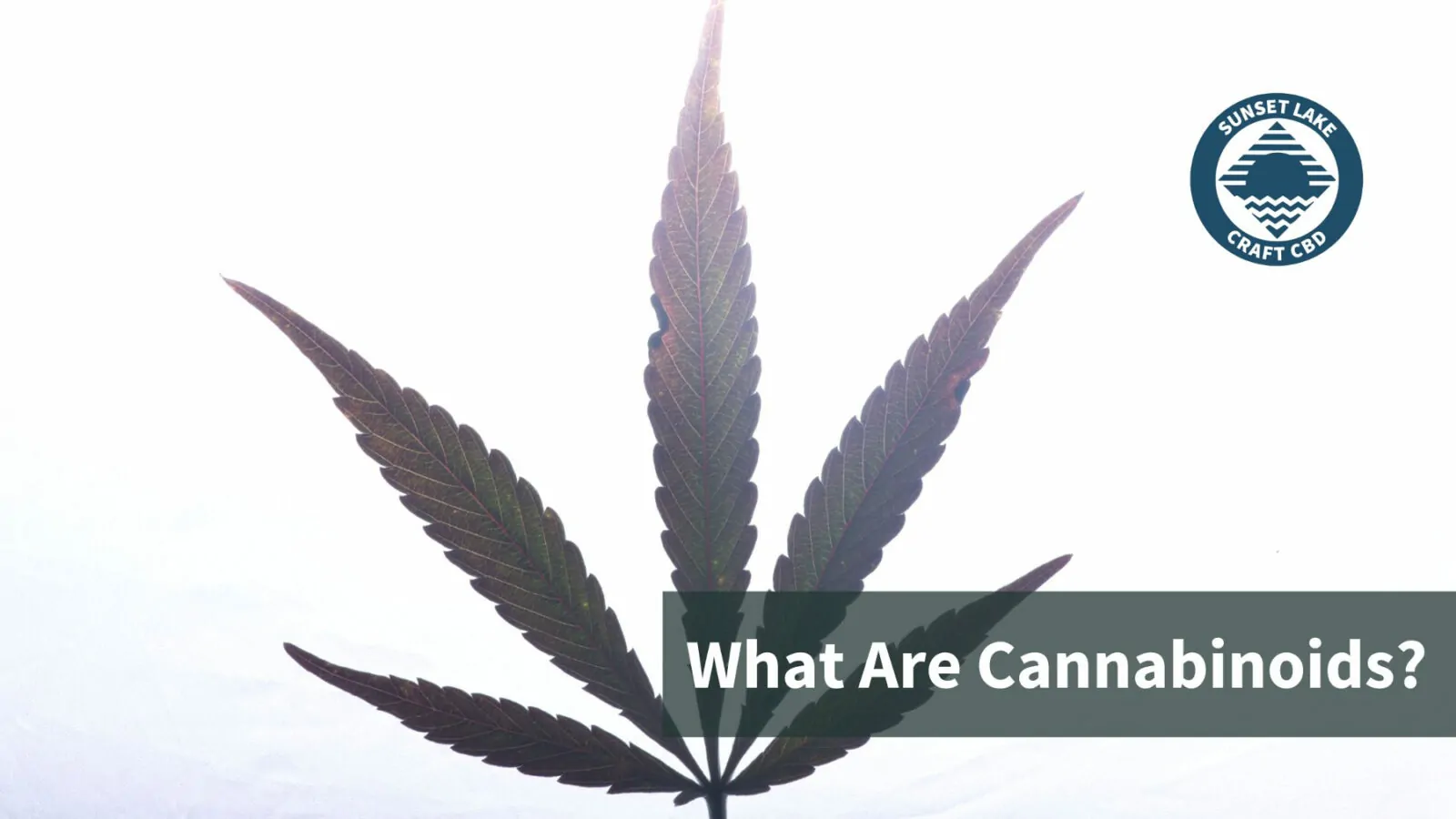No products in the cart.
What Are Cannabinoids? A Brief Introduction

Key Takeaways
- Cannabinoids are organic compounds that interact with the body’s endocannabinoid system.
- Your body produces endocannabinoids to help send messages to different cells.
- Phytocannabinoids can work with your endocannabinoids to produce different effects inside your body.
Since the passage of the 2018 Farm Bill, cannabinoids (pronounced: can·nab·i·noids,) have garnered serious attention, and for good reason. In this post, we’ll define cannabinoids in simple terms, explore how cannabinoids affect your body, and address some common questions about cannabinoids.
What Are Cannabinoids?
Cannabinoids are a class of organic chemicals with the unique ability to interact with our endocannabinoid systems (ECS), changing how we feel, affecting our biological processes, and changing our perception of reality.
We can split cannabinoids into two camps:
- Endocannabinoids – are produced inside the human body to work with our ECS.
- Phytocannabinoids – like CBD and THC, are produced by mature hemp and cannabis plants.
While sources differ on an exact number, most agree that, to date, more than 100 cannabinoids have been identified. We expect to discover and identify more as cannabis science develops.
Endocannabinoids
The endocannabinoid system, discovered in the late 1980s, revealed the significant role of cannabinoids in the human body. The ECS comprises three main components: endocannabinoids, receptors, and enzymes.
Endocannabinoids (a combination of “endogenous cannabinoids”) act as neurotransmitters, carrying messages between cells and ECS receptors, helping to maintain homeostasis. They function similarly to bike messengers, delivering important signals to receptors throughout the body. These messages can include:
- Producing and releasing growth hormone
- Releasing dopamine
- Signaling the release of melatonin
Chemist Raphael Mechoulam discovered the first endocannabinoid, 2-arachidonoylglycerol (2-AG), in 1992. Since then, researchers have cataloged six total endocannabinoids. They include:
- Arachidonoylethanolamine (Anandamide or AEA)
- 2-Arachidonoylglycerol (2-AG)
- 2-Arachidonyl glyceryl ether (noladin ether)
- N-Arachidonoyl dopamine (NADA)
- Virodhamine (OAE)
- Lysophosphatidylinositol (LPI)
Phytocannabinoids
If Endocannabinoids are of the body, then phytocannabinoids are “of the plant,” the cannabis plant, to be more precise. Phytocannabinoids mimic our body’s endocannabinoids and interact with CB1 and CB2 receptors in various ways. There are many different phytocannabinoids, but some of the most popular include:
Cannabidiol (CBD)
CBD, short for cannabidiol, is non-psychoactive, meaning it doesn’t cause intoxication or a “high.” Instead, CBD facilitates the uptake of other beneficial cannabinoids to the CB1 and CB2 receptors.
Using our bike messenger analogy, if endocannabinoid messengers carry important directions to different body parts, CBD acts like the traffic cop and lets those messengers through. This can be particularly helpful when endocannabinoids send anti-inflammatory, pain-relieving, and anti-anxiety signals.
Cannabinol (CBN)
Cannabinol, or CBN, is mildly psychoactive. It is an oxidated form of THC and interacts with the ECS and CB1 receptors similarly. Although we don’t yet know the isolated effects of CBN on humans for certain, we believe that it may help facilitate better sleep.
Tetrahydrocannabinol (THC)
THC is the most well-known phytocannabinoid, recognized for its psychoactive effects. THC is a strong CB1 agonist. When THC binds to CB1 receptors, it can induce euphoria, time dilation, and alterations in mood and cognitive functions.
Consuming Phytocannabinoids
Knowing how beneficial phytocannabinoids can be to our system, you’ll be glad to know that there are plenty of ways to consume in the privacy of your own home.
- Smoking – Inhaling phytocannabinoids has the fastest onset time. You should feel the effects in as little as 30 seconds.
- Edibles – Eating decarboxylated phytocannabinoids can be a great way for new users to experience the benefits of hemp and cannabis. Just be sure to start low and go slow.
- Oils – Oils and sublingual tinctures offer a great and customizable phytocannabinoid dosing experience. The taste, however, may leave something to be desired.
- Topicals – Believe it or not, your skin also contains CB receptors. You can use phytocannabinoid-infused topicals to benefit your skin and calm aggravated areas.
The Entourage Effect
While over 100 cannabinoids have been identified to date, it’s crucial to note that cannabinoids, both endocannabinoids and phytocannabinoids, don’t function effectively in isolation. Research suggests that the interaction between cannabinoids is vital to experiencing their therapeutic benefits. This phenomenon is known as the “entourage effect.”
What Are Cannabinoids: Summarized
While the discovery of endocannabinoids and the endocannabinoid system is truly exciting, it’s important to realize that it’s relatively uncharted biology and that we know very little about how the system works.
That being said, we know even less about phytocannabinoids, which is why we don’t make any medical claims about our handcrafted hemp products.
FAQs
How Many Cannabinoids Are There?
There are at least 100 known phytocannabinoids and 6 known endocannabinoids.
What Are Terpenes Cannabinoids?
Terpenes are not cannabinoids, though they are related to cannabinoids as they are a class of organic chemicals also produced by hemp and cannabis plants.
There is some overlap between the two, but for the most part, cannabinoids interact with our ECS, and terpenes give our hemp and cannabis its unique smell.
Can You Overdose On Cannabinoids?
As far as we know, you cannot overdose on natural phytocannabinoids. There’s a greater chance that you would overdose on synthetic cannabinoids.
There is no research this writer could find that would suggest you can overdose on endocannabinoids.
Do Cannabinoids Cure Cancer?
No. There is no research to suggest that cannabinoids are a viable cancer treatment or cure for cancer.
Can You Make Your Own Cannabinoid-Infused Oil?
Yes, you can. If you’re interested in learning how to make cannabinoid oil, please see our post about making your own CBD oil here.
